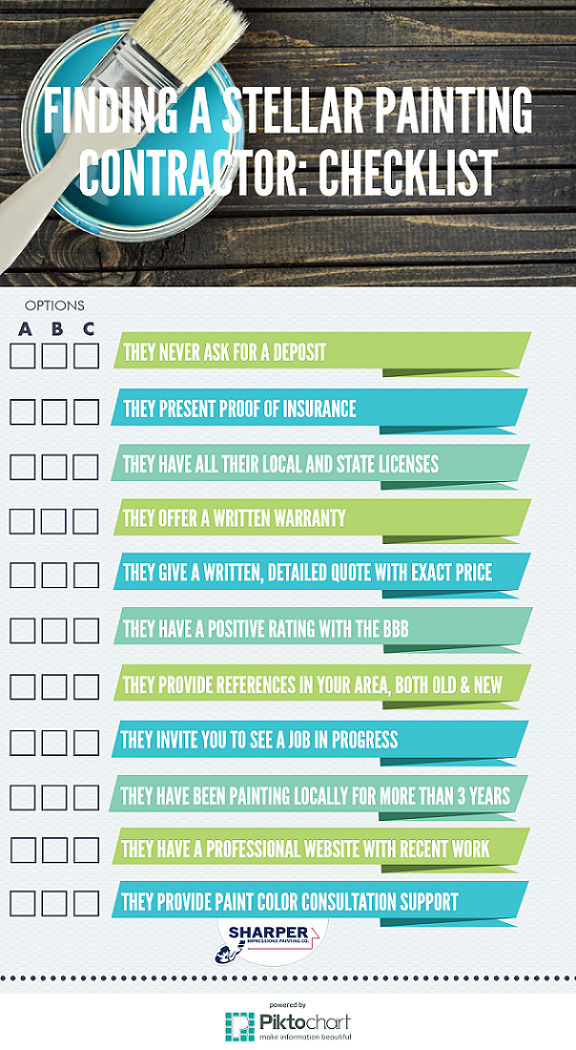The Significance Of Weather Condition In Commercial Outside Painting: What You Need To Understand
The Significance Of Weather Condition In Commercial Outside Painting: What You Need To Understand
Blog Article
Team Writer-Beasley Turan
When you're planning a business external painting project, do not ignore the effect of weather on your outcomes. You need to consider variables like temperature, humidity, and precipitation, as they can make or damage your paint task. For instance, did you understand that ideal problems ask for specific temperature ranges and moisture degrees? Stopping working to monitor these aspects can lead to irregular surfaces or perhaps damage to fresh paint. Recognizing these aspects is vital to achieving a durable, expert result. So, what particular weather should you be wary of?
Temperature level Considerations
When it involves commercial exterior paint, temperature level plays an essential role in the end result of your job. If you're repainting in extreme warm, the paint can dry out too promptly, bring about problems like inadequate attachment and irregular finishes. You wish to go for temperatures between 50 ° F and 85 ° F for the best outcomes. Listed below 50 ° F, paint may not cure properly, while above 85 ° F, you risk blistering and splitting.
Timing your task with the ideal temperature levels is necessary. Begin your work early in the early morning or later in the afternoon when it's cooler, especially during hot months.
Also, take into relevant site can be substantially greater than the air temperature, specifically on warm days. Use a surface area thermometer to check this prior to you start.
If temperature levels are unpredictable, keep an eye on the weather report. Sudden temperature level decreases or warm front can hinder your plans. You do not intend to start painting only to have the problems change mid-project.
Moisture Levels
Moisture levels dramatically influence the success of your industrial external painting project. When the moisture is too high, it can prevent paint drying out and treating, causing a variety of issues like poor adhesion and end up top quality.
If you're intending a work during damp conditions, you may find that the paint takes longer to dry, which can expand your task timeline and boost costs.
On the other hand, low moisture can additionally pose challenges. https://www.housebeautiful.com/uk/decorate/walls/a43401876/paint-colour-mistakes/ may dry out as well swiftly, avoiding proper application and causing an uneven coating.
You'll want to check the humidity degrees very closely to guarantee you're functioning within the ideal array, normally in between 40% and 70%.
To get the most effective outcomes, consider making use of a hygrometer to determine humidity before starting your job.
If you locate the degrees are outside the optimum range, you may require to adjust your schedule or choose paints developed for variable problems.
Always seek advice from the maker's guidelines for certain referrals on humidity resistance.
Precipitation Impact
Rain or snow can considerably interrupt your business outside painting strategies. When precipitation occurs, it can wash away newly applied paint or create an irregular finish. Preferably, you wish to select days with completely dry weather to make certain the paint sticks effectively and cures successfully. If you're captured in a rain shower, it's best to halt the job and wait for conditions to improve.
In addition, snow can be even more destructive. Not just does it produce a damp surface, but it can likewise decrease temperature levels, making it hard for paint to completely dry. https://andreentow.blogtov.com/13761193/discover-the-amazing-effects-of-paint-techniques-on-little-spaces-opening-approaches-that-create-the-illusion-of-extensive-areas can result in problems like peeling or blistering down the line.
It's vital to examine the weather forecast prior to beginning your job. If rainfall or snow is anticipated, take into consideration rescheduling.
Always bear in mind to permit appropriate drying time in between coats, especially if the weather remains unpredictable.
Verdict
In conclusion, watching on the climate is crucial for a successful industrial exterior paint project. By keeping an eye on temperature, humidity, and precipitation, you can make sure the most effective problems for application and healing. Bear in mind to prepare your work around beneficial weather and always adhere to producer standards. With the best method, you'll achieve a long-lasting, lovely surface that can stand up to the elements. Don't let the climate capture you off guard-- stay informed and repaint smart!
